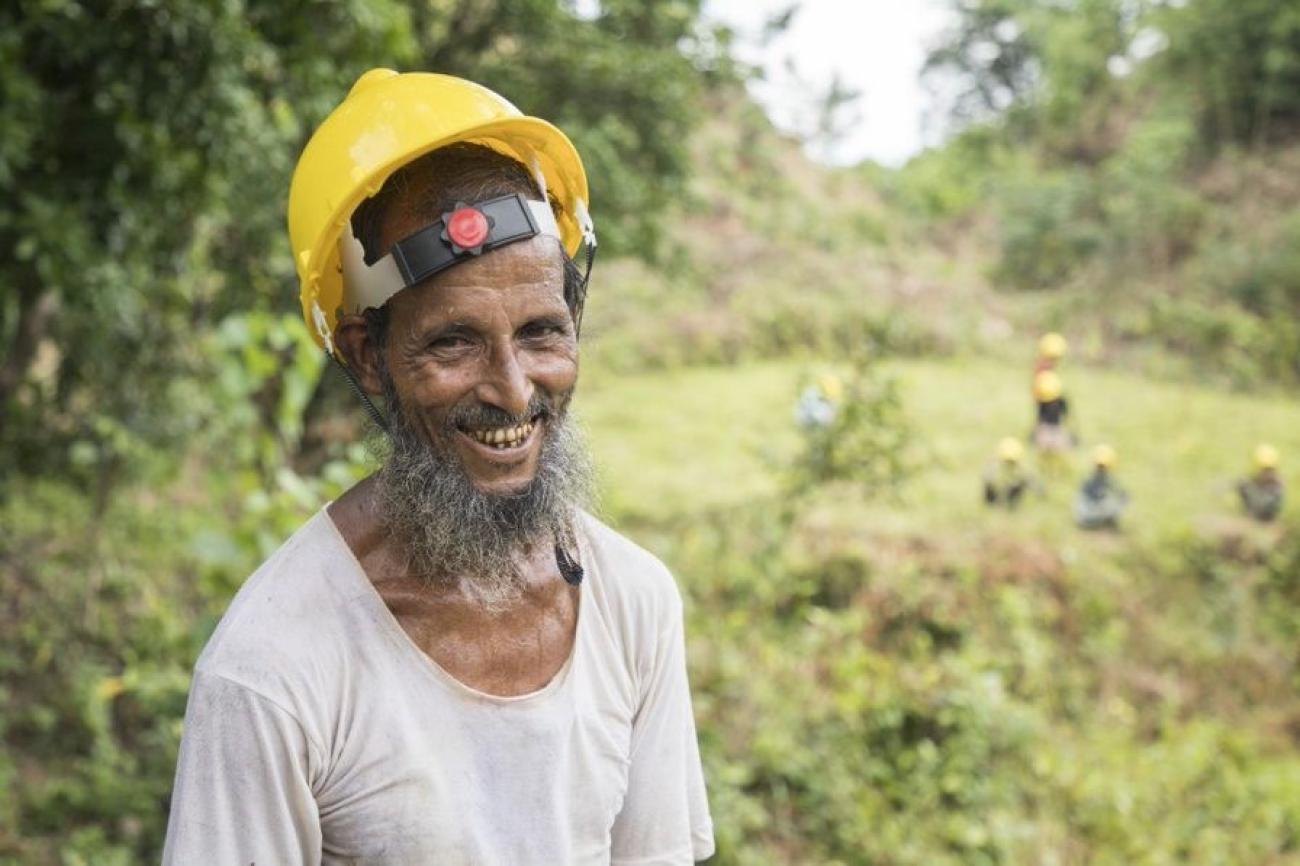FAO has just completed an intensive two-month watershed area reforestation programme, in which nearly half a million tree seedlings were planted near Rohingya camps, through the SAFE Plus project and in collaboration with the Cox’s Bazar South Forest Division. SAFE Plus (Safe Approaches to Fuel and Energy Plus Landscape Restoration and Livelihoods) is a collaborative project between FAO, IOM, and WFP.
Local people from some of the district’s poorest communities were employed as seasonal workers. They planted 475 000 tree seedlings and cleared unwanted vegetation and undergrowth across 571 hectares, over the course of October and November.
This is in addition to 25 000 tree seedlings that were planted near the camps and another half a million planted inside the camps – bringing the overall total to one million trees. The seedlings replaced trees that had been lost due to the development of settlements and demand for firewood.
Local nurseries – 16 of which were established through the project – grew the tree seedlings, further benefitting the local economy and delivering a sustainable source of trees. FAO supported a total of 45 nurseries, providing training and other support.
The tree planting programme outside the camps was carried out through the Watershed and Forest Rehabilitation project which is jointly funded by the governments of Japan, the Netherlands, Canada, as well as IOM.
The project targets vulnerable watershed areas which are upland forest areas that capture rainwater, feeding rivers and streams. Forests and trees play crucial roles: they regulate water flow, maintain water quality, prevent landslides, provide materials for local livelihoods, conserve biodiversity, and protect against natural hazards (e.g. local floods and landslides).
The recent planting was done in collaboration with 19 local Forest Department offices. Most of it, 360 hectares, was located within just one to three kilometres of the camps (the buffer zone) while the rest, 190 hectares, was done between three and five kilometres. In the core zone, an assisted natural regeneration (ANR) approach was used, a process whereby natural growth is supported by the removal of undesired species, followed by the plantation of indigenous species as needed.
Working with government and other partners, an additional ten hectares was planted around government institutions (schools, government offices), a further eleven hectares along the banks of the Reju Khal canal and on specific patches of land outside recorded forest areas, providing protection to one of the area’s main water sources for local communities.






